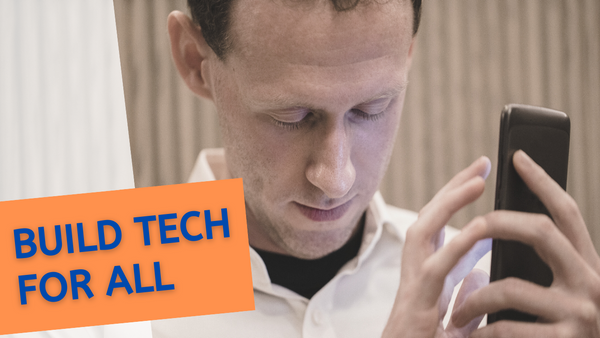When we talk about digital accessibility and inclusion, I still find that a lot of clients still see that as an afterthought, like a burden to their project. But the narrative is changing. Similar to the sustainability efforts that we see moving around the world, there is a lot more dialogue and emphasis on how we can turn digital accessibility into opportunities.
In this video, I will share with you some of the inspiring thoughts that were shared by a panel of speakers at the dinner we organised last night. This will give you a fresh perspective on how you need to position your accessibility efforts across your teams, and across your company, for the next iteration of your digital products.
Let's get to it.
As part of spreading knowledge and inspiring clients, associates and our staff, we brought together a panel of truly inspiring speakers at our industry event last night. We were joined by a UX specialist, a gold-medallist Paralympian, and two leading voices in the blind and disabled community. We got the chance to hear their views about digital inclusivity and accessibility and what it means for our industry in the next few years.
The future of digital accessibility
It was really refreshing to see how the digital industry is really evolving. More and more, accessibility is no longer about compliance, but it's more about empathy, because we all need to deliver digital solutions that are inclusive, where everyone can use them by default. Here are my three takeaways of the event.
1. Accessibility helps innovation and creativity
The first one is that accessibility helps innovation and creativity. We have real case studies of that: when we put accessibility at the heart of every design decision, it helps make the product better for everyone. It forces us to optimise the content and make it easy to understand and browse for all users.
It's also important to remember that it's a very dynamic process at all stages of design & development. It's never really "done"... Even after go live, it's ongoing.
To achieve this, my colleague Meera shared her tip: it's about being very aware of who is NOT in the room when you make a decision. Who would be impacted by a specific change or a new feature? You always have to keep that in the back of your mind.
2. Technology is an enabler for all
The second point to highlight is that technology is an enabler for all, not just for people with accessibility needs. One of the examples that was shared was how subtitles on TV were originally created for the hearing impaired, but recent studies have shown, demonstrated and confirmed that it actually helps children learn to read better and faster.
Another visually impaired speaker shared how her Amazon Alexa is now her favourite companion. It helps her wake up in the morning, helps her get the news, manage her schedule, shopping lists, reminders... she couldn't live without it anymore!
Looking at the most accessible brand in the world, Apple and the iPhone have been like a piece of magic for all of us, isn't it? But it even had a bigger impact on the visually impaired users who have been liberated by this piece of technology, it now allows them to do everything online.
However, we need to be careful with this evolution. The new trends of touchscreen technology, for example in elevators, has been a setback because we've lost the Braille symbols on the buttons.
3. Education in UX, Tech and Product Management
That takes me to my third point, which is about the need to continue educating everyone and not repeat the same mistakes - that's what I'm doing today! For the last 30 years for example, we've spent billions on retrofitting buildings with accessible ramps. In the last ten, five, and even today, billions are being spent on technology and lawsuits to ensure that websites and apps are accessible and compatible with assistive technology.
When we talk about the future trends, self-driving cars will massively help blind users to get around. However there are also a lot of new technologies that are at risk of forgetting some of those basic principles. For example, when we talk about the metaverse - how's that going to work for blind users or the hearing impaired? Are we heading in the same direction with our hands in the sand and making the same mistakes? We'll explore that in my next video, you can subscribe if you want to hear more about this.
Accessibility will be the norm
To wrap up the evening, the dream of our speakers was that one day we won't have to talk about accessibility as a separate activity.... that it will just be the norm for everything, for everyone, in every discipline, and that it will be done by default.
We're not there yet, but after the dinner, and these inspiring talks, we all left and felt very empowered by the fact that there's so much progress being made and that the future is looking really bright.
If you want to take digital accessibility more seriously, please read or watch my recent article / video about how this can be applied on a real digital project of building a website end to end, and all the tips to implement best practices.
If you want to know more, just get in touch. Don't forget to subscribe to my YouTube channel and follow me on Twitter to keep learning with me and grow your career in digital.
Until next time, stay safe and see you soon.



